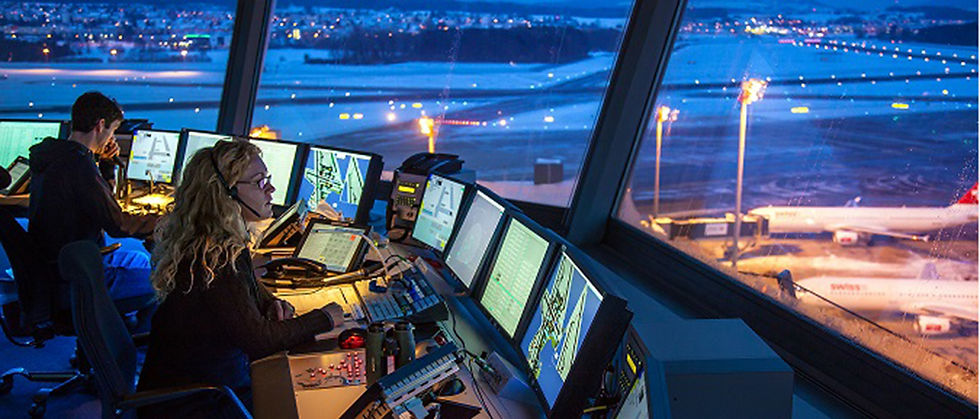Flight Safety Tips: From Pre-Flight to Pilot Attitude
- Garth Calitz
- Jun 2, 2020
- 4 min read
Flight safety is often thought of as tedious and boring. But nothing is further from the truth. Safe flying is fun flying especially now that the majority of pilots haven't been in the cockpit for a while.


One fundamental truth in aviation is that flying requires safety and there is nothing funny about safety. While stern in appearance, this is not the same as saying there is no fun in flying. If there wasn't, why would we pursue flying in the first place? Ask any pilot and you get stories of flying adventures, feelings of freedom in the air, and pure "joie de vivre" through flight. Safety, and the procedures required for it, is part of the aviation process. Redundancies are part of the pre-flight check, general aviation safety and CAA regulations.

Any flight, whether a short hop to an adjoining airfield, or a long jaunt cross-country, requires a pre-flight check. Too often, pilots become complacent and do a perfunctory pre-flight. This is a dangerous attitude and one that needs to be checked at the door. Make a list for your aircraft and stick to it, each and every time. The pre-flight needs to include sumping and checking the fuel, checking oil levels, feeling tightness on the belts, looking for any bends or compromises in the air frame, a full check of the landing gear, and going over the empennage and ailerons.

The pitot tubes must be checked for debris and any "remove before flight" tags removed. This list is a basic outline, and with each different aircraft there may be more items to go over. The notion of "familiarity breeds contempt" changes to "familiarity leads to laziness" as many pilots may develop bad habits when carrying out pre-flight checks on familiar aircraft. For safety's sake do not compromise on the pre-flight check.

Before commencing with your pre-flight inspection take a few minutes to get into “Flight Mode” if you rush from the car to the aircraft you are bound to take that manic attitude into your pre-flight and into the cockpit which could lead to bad decision making.

There are several attitude "killers" in aviation, and all of them need to be addressed, recognized and corrected if you wish to be a safe pilot who lives to fly another day. Ask any senior pilot and you hear the adage "there are old pilots, and bold pilots, but there are no old and bold pilots." Having an overloaded sense of bravado or invincibility quickly leads to poor decisions and an over-inflated sense of skills. This is not to say you should not recognize or admit aptitude, but there is a fine line between competence and arrogance.

Among the attitudes that contribute the most to declining safety are outlined below. Learn how to recognize these in yourself and fellow aviators so that you are able to correct them before you get into trouble:
Anti-Authority: When an anti-authority stance is taken, "cowboy" attitudes envelope decision-making. Contrary to popular opinion, the CAA is not here to ruin our day; the rules are there for a reason. In order to keep everyone safe, each pilot is duty bound to follow rules.
Resignation: By taking this tact, you give up before you begin. Look around at most aviators and you see confidence and aptitude. However, when resignation appears, self-fulfilling prophecies swallow good piloting decisions.
Invincibility: The idea you are not going to have any accidents or you possess some sort of magic aura that protects you from all things bad. Get over it. Bad things can and will happen to you with this attitude.
Rashness: Impulsive decisions lead to errors. Take the time to think out your moves and choices. Even in emergency situations, the difference between a one or two second breath and immediate reactions often leads to better decisions. Slow down.
Machismo/Bravado: This is not limited to men only. This attitude has the potential to affect female pilot decisions as well. Ask yourself why you are up here flying. Is it to have bragging rights or to show off, or is it for the pure love of flying? Leave the ego at the door and just fly.

When in the air, you need to be familiar with the many facets of safe flight. Knowing the proper altitude to fly at (are you flying east or west?), how to communicate on the radio, use a chart, and recognize lights and markers are essential (and part of any pilot's training). Stick to your basic training
When in doubt, call and ask for help. The ATC’s will do whatever they can to assist you in any situation; Remember they want you to land safely.

Knowing how weather behaves, what the topography does to influence the weather and how the airplane reacts or is affected by weather is important for safe flight. Go through a full weather briefing before flights, using any weather resource available at your location. Charts have this information and with Internet empowered devices; pilots have access to weather and changing conditions at the tips of their fingers.
Plan contingencies if mountain flying and go over the route prior to taking to the air. Foreknowledge is power and power is safety. Keep charts at the ready or electronic devices programmed with the charts and left on the home screen.
Safety is not boring or the realm of worriers. Safety is the key to fun flying. May the wind be on your tail and the sky blue.





























Comments